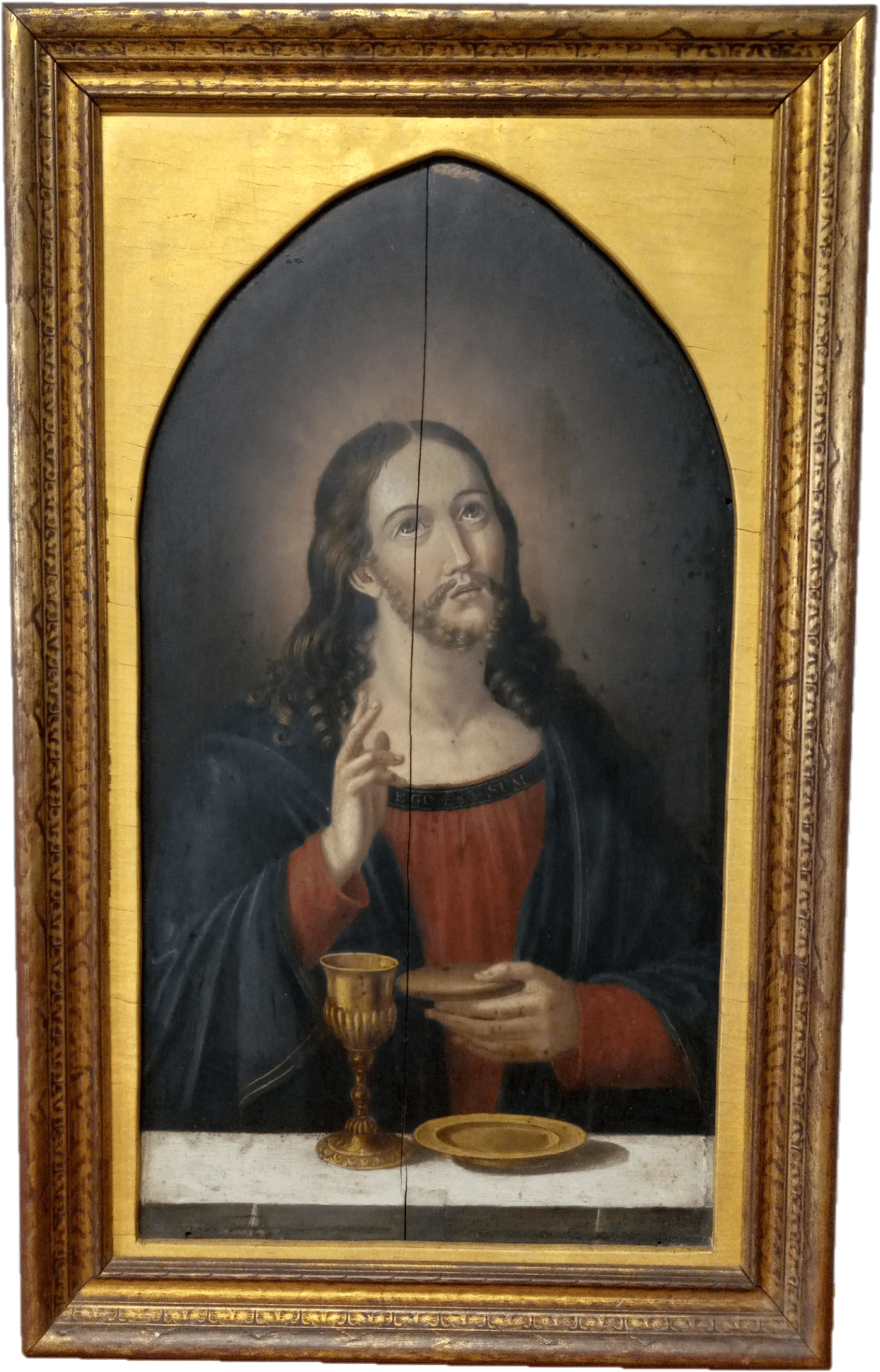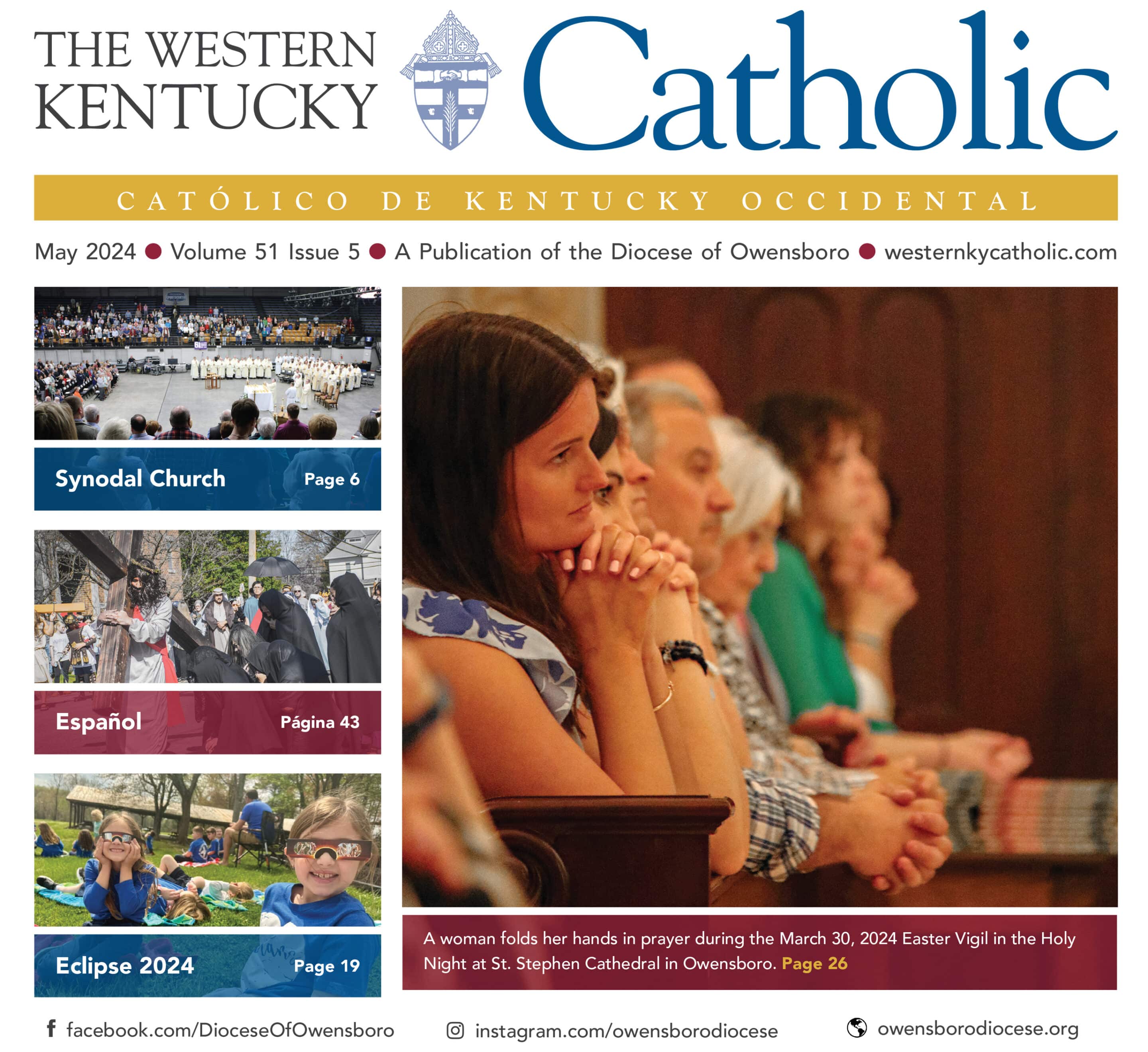
Photograph of “The Institution of the Blessed Sacrament” held by the Mount Saint Joseph archives. COURTESY OF ARCHIVES
The story behind the oldest painting at Mount Saint Joseph
BY EDWARD WILSON, ARCHIVES
A question archivists can often be asked is, “What is the oldest thing you have in the archives?” This is a natural question. Archives are for old stuff. So, logic follows that there should be some pretty old things in them. Well, we have plenty of old things at both the diocesan archives, as well as the archives at Mount Saint Joseph. One of these interesting “oldest” items we will be looking at today is reported to be the oldest painting at the Mount, “The Institution of the Blessed Sacrament.”
The provenance of the piece is over a century long and two continents wide. According to archived records, the painting is on a tabernacle door and found its way to America in the hands of an order of French nuns. They intended on getting the piece restored before returning home. However, they were called back on short notice and left the piece behind.
The building that the nuns vacated was shortly after inhabited by some Ursuline sisters of Mount Saint Joseph. The French nuns left several things, including another work of art. Ursuline sister, Sr. Etheldreda, realized the significance of the works and brought them back to the Mount with her. In about 1912, five or six years after the painting made it to the Mount, it was restored. The appraisal at the time was very high. This is one of two origin stories of the painting. It is noted that this one is the most likely.
It is perhaps said too often but photographs do not do this work justice. We have all seen the painting of the Last Supper. It is full of action, busy politicking, cluttered with people, individual stories and movement. Meanwhile, Christ is depicted sitting at the center of the table near despondent, in a room full of friends with no comfort.
This piece is a very different light on the same event. Christ is the solitary focus. He sits alone. His eyes are pools gazing towards heaven. They are not sad or fearful but receptive, trusting, like a child listening to his father or a lamb following his shepherd. The light reflects the gold in his hair. Another gold feature catches the light. There is an inscription on the collar of his tunic, Ego Sum, “I am.” This statement is one that is rife with biblical significance and could keep theologians talking for days. Though I am no theologian, I imagine the phrase, in this context, is a statement of the entirety of the piece: “I am” the “Institution of the Blessed Sacrament” He is the sacrifice; absolutely beautiful.
Though art is moving for many, history has a beauty all its own. These stories give pieces life in a way brushstrokes never could. Thanks to the MSJ Ursulines, who have always had a love for preserving history, we can now enjoy this beautiful piece of art and reflect on the beauty of its appearance, message, and history.
Edward Wilson is the director of the Diocese of Owensboro’s Archives and the Archives of the Ursuline Sisters of Mount Saint Joseph. Comments and questions may be sent to [email protected].
Originally printed in the May 2024 issue of The Western Kentucky Catholic.

